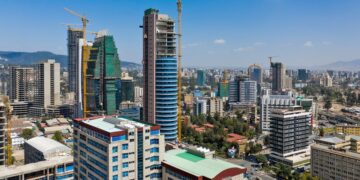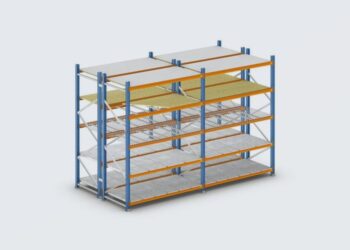Prostate cancer is a type of cancer that develops in the prostate gland, which is a small walnut-shaped gland located below the bladder and in front of the rectum in men. The prostate gland plays a crucial role in the male reproductive system by producing seminal fluid, which nourishes and transports sperm during ejaculation. Prostate cancer occurs when normal cells in the prostate gland mutate and begin to grow uncontrollably, forming a tumor. If left untreated, prostate cancer cells can spread (metastasize) to nearby tissues and organs, such as the seminal vesicles, bladder, and rectum, as well as to distant sites in the body, such as the bones, lymph nodes, or other organs.
Types of prostate cancer
Prostate cancer can be broadly categorized into two main types:
a. Adenocarcinoma
Adenocarcinoma is by far the most common type of prostate cancer, accounting for approximately 99% of all cases. This type of cancer originates from the glandular cells within the prostate gland. The prostate gland produces seminal fluid, which nourishes and transports sperm during ejaculation. Adenocarcinoma of the prostate typically develops slowly, and in many cases, it may remain confined to the prostate gland for an extended period before spreading to other parts of the body.
b. Rare types
While adenocarcinoma accounts for the vast majority of prostate cancer cases, there are also several rare types of prostate cancer, each with distinct histological features and clinical characteristics. These rare types include:
- Small cell carcinoma: Small cell carcinoma of the prostate is a highly aggressive subtype that comprises a small proportion of prostate cancer cases. It tends to grow rapidly and is associated with a poorer prognosis compared to adenocarcinoma.
- Sarcomas: Prostate sarcomas are rare tumors that originate from the connective tissues (e.g., muscle, bone, blood vessels) within the prostate gland. These tumors are typically aggressive and may require specialized treatment approaches.
- Neuroendocrine tumors: Neuroendocrine tumors of the prostate are rare and aggressive tumors that arise from neuroendocrine cells within the prostate gland. They may occur de novo or develop as a result of treatment resistance in patients with advanced prostate cancer.
- Transitional cell carcinomas: Transitional cell carcinoma, also known as urothelial carcinoma, is a rare subtype of prostate cancer that originates from the transitional epithelial cells lining the urinary tract. It can occur concurrently with bladder cancer or as a secondary malignancy in the prostate gland.
Causes of prostate cancer
Prostate cancer, like many other types of cancer, arises from a complex interplay of genetic, environmental, and lifestyle factors. While the exact cause of prostate cancer remains elusive, numerous risk factors have been identified that may contribute to its development. Understanding these risk factors is crucial for both prevention and early detection.
a. Age
Age is the most significant risk factor for prostate cancer. The likelihood of developing prostate cancer increases significantly with age, particularly after the age of 50. The majority of prostate cancer cases are diagnosed in men over the age of 65. However, it is essential to note that prostate cancer can occur in younger men as well, albeit less frequently.
b. Family history and genetics
A family history of prostate cancer is another important risk factor. Men with a first-degree relative (father, brother) diagnosed with prostate cancer are at increased risk themselves. The risk is even higher if multiple family members are affected or if the relative was diagnosed at a younger age. Additionally, mutations in certain genes, such as BRCA1 and BRCA2, which are well-known for their association with breast and ovarian cancers in women, have also been linked to an increased risk of prostate cancer in men.
c. Race and ethnicity
Prostate cancer incidence and mortality rates vary significantly among different racial and ethnic groups. For instance; African American men have the highest risk of developing prostate cancer and are more likely to be diagnosed at an advanced stage compared to men of other racial and ethnic backgrounds. Additionally, African American men tend to have more aggressive forms of prostate cancer and higher mortality rates. The reasons for these disparities are complex and likely involve a combination of genetic, environmental, and socioeconomic factors.
d. Geographic and environmental factors
Geographic variations in prostate cancer incidence have been observed worldwide, with higher rates reported in North America, Europe, and Australia compared to Asia and Africa. While the exact reasons for these geographic differences are not fully understood, environmental factors such as diet, lifestyle, exposure to environmental toxins, and access to healthcare may play a role. For example, a diet high in red meat and processed foods, low in fruits and vegetables, and high in saturated fats has been associated with an increased risk of prostate cancer.
e. Lifestyle factors
Several modifiable lifestyle factors have been implicated in prostate cancer risk. These include:
- Diet: A diet high in saturated fats, red meat, and processed foods and low in fruits, vegetables, and fiber may increase the risk of prostate cancer. Conversely, a diet rich in fruits, vegetables, whole grains, and healthy fats may have a protective effect.
- Physical activity: Regular exercise and physical activity have been associated with a reduced risk of prostate cancer. Engaging in at least 30 minutes of moderate to vigorous physical activity most days of the week may help lower the risk.
- Obesity: Obesity has been linked to an increased risk of developing advanced or aggressive prostate cancer. Maintaining a healthy weight through diet and exercise may help lower the risk.
- Smoking: While the evidence linking smoking to prostate cancer risk is less clear compared to other cancers, smoking has been associated with an increased risk of dying from prostate cancer among men diagnosed with the disease.
f. Hormonal factors
Hormonal factors, particularly the role of androgens (male hormones), are believed to play a significant role in the development and progression of prostate cancer. Androgens, such as testosterone, stimulate the growth and function of the prostate gland. High levels of androgens or alterations in androgen metabolism may contribute to the development of prostate cancer. Hormone therapy, which aims to reduce androgen levels or block their effects, is a common treatment for advanced prostate cancer.
g. Inflammation and prostate health
Chronic inflammation of the prostate gland, often referred to as prostatitis, has been suggested as a potential risk factor for prostate cancer. Although the exact relationship between inflammation and prostate cancer is not fully understood, ongoing inflammation may contribute to genetic mutations, cellular damage, and alterations in the microenvironment that promote cancer development. Additionally, benign prostatic hyperplasia (BPH), a non-cancerous enlargement of the prostate gland commonly observed in aging men, has been associated with an increased risk of prostate cancer.
Symptoms of prostate cancer
Prostate cancer is often referred to as a “silent disease” because it may not cause noticeable symptoms, particularly in its early stages. However, as the cancer grows or spreads, it can lead to various symptoms that warrant further investigation. It’s important to note that many of these symptoms can also be caused by non-cancerous conditions, such as benign prostatic hyperplasia (BPH) or prostatitis. Nevertheless, any persistent or concerning symptoms should be promptly evaluated by a healthcare professional.
a. Changes in urination
- Difficulty starting urination or weak urine flow: Prostate cancer can cause obstruction of the urethra (the tube that carries urine from the bladder through the penis), leading to difficulties with starting urination or a weak urinary stream.
- Frequent urination, especially at night (nocturia): Increased frequency of urination, particularly during the night, may be a symptom of prostate cancer. This symptom is often accompanied by a sense of urgency.
- Difficulty emptying the bladder completely: Prostate cancer can interfere with the normal emptying of the bladder, resulting in a sensation of incomplete emptying after urination.
- Pain or discomfort during urination (dysuria): Some men with prostate cancer may experience pain, burning, or discomfort when urinating.
b. Blood in urine or semen
- Hematuria: Blood in the urine (hematuria) may occur due to various reasons, including prostate cancer. While blood in the urine is not always a sign of cancer, it should be evaluated by a healthcare professional to determine the underlying cause.
- Hematospermia: Blood in the semen (hematospermia) is less common but may also be associated with prostate cancer. Like hematuria, hematospermia should be investigated by a healthcare provider.
c. Erectile dysfunction
Prostate cancer can affect erectile function, leading to difficulty achieving or maintaining an erection (erectile dysfunction). While erectile dysfunction can have multiple causes, including age and other health conditions, it may be associated with prostate cancer in some cases.
d. Pain or discomfort
- Pain in the lower back, pelvis, hips, or thighs: Prostate cancer that has spread to the bones (bone metastases) can cause bone pain or discomfort, typically in the lower back, pelvis, hips, or thighs. Bone pain may worsen at night or with movement and may be accompanied by stiffness or weakness.
- Painful ejaculation: Some men with prostate cancer may experience pain or discomfort during ejaculation, although this symptom is less common.
e. Unexplained weight loss
Advanced prostate cancer can cause unintentional weight loss, often due to a combination of factors such as decreased appetite, changes in metabolism, and cancer-related inflammation.
f. Fatigue
Fatigue, or extreme tiredness, is a common symptom experienced by many cancer patients, including those with prostate cancer. Fatigue may be related to cancer itself, as well as treatments such as surgery, radiation therapy, chemotherapy, or hormone therapy.
g. Swelling in the legs or pelvic area
In advanced cases of prostate cancer, the cancer may spread to nearby lymph nodes or compress blood vessels, leading to swelling (edema) in the legs or pelvic area.
Stages of prostate cancer
Prostate cancer staging is a crucial aspect of diagnosis and treatment planning, as it helps healthcare providers determine the extent of the cancer and select the most appropriate management strategy. The staging system commonly used for prostate cancer is the TNM system, which stands for Tumor, Node, and Metastasis. This system categorizes prostate cancer based on the size and extent of the tumor (T), whether the cancer has spread to nearby lymph nodes (N), and whether it has metastasized (M) to distant sites in the body. The combination of these factors determines the overall stage of the cancer.
Stage I
- Tumor (T): The tumor is confined to the prostate gland and cannot be felt during a digital rectal examination (DRE) or seen on imaging tests such as ultrasound or MRI.
- Node (N): The cancer has not spread to nearby lymph nodes.
- Metastasis (M): There is no evidence of distant metastasis.
- Characteristics: Stage I prostate cancer is considered localized, with the tumor typically small and confined within the prostate gland. It is often detected incidentally during prostate biopsies performed for elevated prostate-specific antigen (PSA) levels or abnormal DRE findings.
Stage II
- Tumor (T): The tumor is still confined to the prostate gland but may be larger in size compared to Stage I. It may be palpable during a digital rectal examination (DRE) or detected on imaging tests.
- Node (N): The cancer has not spread to nearby lymph nodes.
- Metastasis (M): There is no evidence of distant metastasis.
- Characteristics: Stage II prostate cancer is also considered localized, but the tumor may be more advanced and may have a higher risk of progression compared to Stage I. Treatment options may vary based on factors such as tumor size, grade, and patient preferences.
Stage III
- Tumor (T): The cancer has spread beyond the prostate gland and may involve nearby tissues or organs, such as the seminal vesicles.
- Node (N): The cancer may or may not have spread to nearby lymph nodes.
- Metastasis (M): There is no evidence of distant metastasis.
- Characteristics: Stage III prostate cancer is considered locally advanced, with the tumor extending beyond the confines of the prostate gland. It may be associated with more significant symptoms and a higher risk of complications compared to earlier stages. Treatment may involve a combination of surgery, radiation therapy, hormone therapy, or other modalities.
Stage IV
- Tumor (T): The cancer has spread beyond the prostate gland and may involve nearby tissues, organs, or structures, such as the bladder, rectum, pelvic sidewall, or pelvic lymph nodes.
- Node (N): The cancer may or may not have spread to nearby lymph nodes.
- Metastasis (M): The cancer has spread to distant sites in the body, such as the bones, liver, lungs, or other organs.
- Characteristics: Stage IV prostate cancer is considered advanced or metastatic, with cancer cells spreading to distant parts of the body. It may cause symptoms such as bone pain, urinary problems, or fatigue. Treatment aims to control the spread of the cancer, alleviate symptoms, and improve quality of life. Treatment options may include hormone therapy, chemotherapy, radiation therapy, targeted therapy, immunotherapy, or supportive care measures.
Prevention of prostate cancer
Prevention strategies for prostate cancer primarily focus on reducing risk factors and adopting a healthy lifestyle. While it’s not always possible to prevent prostate cancer entirely, implementing these preventive measures may help reduce the likelihood of developing the disease or delay its onset.
a. Maintain a healthy weight
Obesity has been associated with an increased risk of prostate cancer, particularly aggressive forms of the disease. Maintaining a healthy weight through a balanced diet and regular exercise can help lower the risk. Aim for a body mass index (BMI) within the normal range (18.5 to 24.9) and avoid excessive weight gain, particularly around the waistline.
b. Follow a healthy diet
Diet plays a significant role in prostate cancer risk. A diet rich in fruits, vegetables, whole grains, and healthy fats (such as those found in nuts, seeds, and fatty fish) may help reduce the risk of prostate cancer. Conversely, a diet high in red meat, processed foods, and saturated fats may increase the risk. Limit consumption of red and processed meats, as well as sugary beverages and high-calorie snacks.
c. Increase physical activity
Regular physical activity has been associated with a reduced risk of prostate cancer. Aim for at least 150 minutes of moderate-intensity aerobic exercise or 75 minutes of vigorous-intensity aerobic exercise each week, along with muscle-strengthening activities on two or more days per week. Physical activity not only helps maintain a healthy weight but also may have direct effects on hormone levels and immune function that could lower cancer risk.
d. Quit smoking
Smoking has been linked to an increased risk of aggressive prostate cancer and mortality from the disease. If you smoke, quitting is one of the most important steps you can take to improve your overall health and reduce your risk of cancer. Seek support from healthcare providers, quit-smoking programs, or support groups to help you quit successfully.
e. Limit alcohol consumption
Excessive alcohol consumption has been associated with an increased risk of prostate cancer. Limit alcoholic beverages to moderate levels, defined as up to one drink per day for men. If you choose to drink alcohol, do so in moderation and consider healthier alternatives such as red wine, which contains antioxidants that may offer some protective benefits.
f. Consider dietary supplements
Some studies suggest that certain dietary supplements, such as vitamin E, selenium, and lycopene (found in tomatoes), may have a protective effect against prostate cancer. However, evidence on the efficacy of these supplements is mixed, and more research is needed to determine their role in prostate cancer prevention. Talk to your healthcare provider before starting any dietary supplements to ensure they are safe and appropriate for you.
g. Get regular screening
While routine screening for prostate cancer remains controversial, particularly regarding the benefits and risks of prostate-specific antigen (PSA) testing, it’s essential to discuss screening options with your healthcare provider, especially if you are at higher risk due to factors such as age, family history, or African American ethnicity. Shared decision-making between patients and providers can help determine the most appropriate screening approach based on individual risk factors, preferences, and values.
h. Maintain regular follow-up with healthcare providers
Regular check-ups and preventive healthcare visits are essential for monitoring overall health and detecting any signs or symptoms of prostate cancer early. Be proactive about discussing any concerns or symptoms with your healthcare provider and follow their recommendations for cancer screening and preventive care.
Diagnosis of prostate cancer
The diagnosis of prostate cancer typically involves a combination of medical history evaluation, physical examination, laboratory tests, imaging studies, and biopsy procedures. Early detection is key to successful treatment and improved outcomes.
a. Medical history and physical examination
- Healthcare providers begin by taking a detailed medical history, including information about symptoms, risk factors (such as age, family history, and race), and any relevant medical conditions or medications.
- A thorough physical examination may include a digital rectal examination (DRE), during which the healthcare provider inserts a gloved, lubricated finger into the rectum to feel the prostate gland for any abnormalities, such as lumps, nodules, or enlargement.
b. Prostate-Specific Antigen (PSA) test
- The PSA test is a blood test that measures the level of prostate-specific antigen, a protein produced by the prostate gland, in the bloodstream.
- Elevated PSA levels may indicate the presence of prostate cancer, although other factors such as age, prostate size, inflammation, infection, and recent ejaculation can also affect PSA levels.
- PSA testing is commonly used for prostate cancer screening, particularly in men aged 50 and older or those at higher risk due to factors such as family history or ethnicity.
c. Imaging studies
Imaging tests may be performed to evaluate the prostate gland and surrounding tissues and to detect any abnormalities that may suggest the presence of prostate cancer.
- Transrectal ultrasound (TRUS): This imaging test uses sound waves to create a picture of the prostate gland and surrounding tissues. It can help identify any suspicious areas that may require further evaluation.
- Magnetic Resonance Imaging (MRI): MRI scans of the prostate gland can provide detailed images of the prostate and surrounding structures, helping to detect any abnormalities or suspicious lesions.
- Computed Tomography (CT) Scan: CT scans may be used to evaluate the extent of prostate cancer spread to nearby lymph nodes or other organs, particularly in cases of more advanced disease.
- Bone Scan: A bone scan may be performed to assess whether prostate cancer has spread (metastasized) to the bones, which is a common site of metastasis in advanced prostate cancer.
- Positron Emission Tomography (PET) Scan: PET scans with certain radioactive tracers, such as choline or prostate-specific membrane antigen (PSMA) tracers, may be used to detect prostate cancer metastases, particularly in cases of biochemical recurrence (rising PSA levels after initial treatment).
d. Biopsy procedures
If abnormalities are detected during screening tests or imaging studies, a prostate biopsy may be recommended to confirm the diagnosis of prostate cancer. During a prostate biopsy:
- Ultrasound-guided Transrectal Prostate Biopsy: This is the most common biopsy technique for prostate cancer diagnosis. A thin needle is inserted through the rectum and guided by transrectal ultrasound to obtain small tissue samples (cores) from different areas of the prostate gland.
- MRI-guided Prostate Biopsy: In some cases, MRI images may be used to guide the biopsy needle to specific suspicious areas identified on the MRI scan, increasing the accuracy of the biopsy.
- Transperineal Prostate Biopsy: This biopsy technique involves inserting the biopsy needle through the perineum (the area between the scrotum and anus) to obtain tissue samples from the prostate gland. It may be used in cases where transrectal biopsy is not feasible or to target specific areas identified on imaging.
e. Pathology evaluation
Tissue samples obtained from the prostate biopsy are sent to a pathology laboratory for examination under a microscope by a pathologist. The pathology report provides information about the presence, grade, and extent of prostate cancer based on the following factors:
- Gleason Score: The Gleason score is a grading system used to assess the aggressiveness of prostate cancer based on the microscopic appearance of tumor cells. It ranges from 6 (low-grade cancer) to 10 (high-grade cancer), with higher scores indicating a more aggressive tumor.
- Tumor Grade and Stage: Pathologists evaluate the size, extent, and characteristics of the tumor cells to determine the grade and stage of prostate cancer, which helps guide treatment decisions.
f. Additional tests and assessments
Depending on the individual case and extent of disease, additional tests or assessments may be performed to evaluate the overall health status, assess treatment options, and monitor disease progression. These may include:
- Additional imaging studies (e.g., MRI, CT scan, bone scan) to assess disease spread and monitor treatment response.
- Biomarker tests to assess tumor markers or genetic mutations associated with prostate cancer aggressiveness and treatment response.
- Monitoring of prostate-specific antigen (PSA) levels over time to track disease progression and response to treatment.
- Consultation with a multidisciplinary team of healthcare providers, including urologists, radiation oncologists, medical oncologists, and other specialists, to develop an individualized treatment plan.
Treatment of prostate cancer
Treatment for prostate cancer depends on several factors, including the stage and grade of the cancer, the patient’s overall health and preferences, and the potential side effects of treatment. The main treatment options for prostate cancer include active surveillance, surgery, radiation therapy, hormone therapy, chemotherapy, targeted therapy, and immunotherapy. In many cases, a combination of these treatments may be used.
a. Active surveillance
- Active surveillance, also known as watchful waiting, may be recommended for men with low-risk or early-stage prostate cancer that is unlikely to cause symptoms or spread aggressively.
- During active surveillance, regular monitoring of PSA levels, digital rectal exams (DREs), and periodic imaging tests (such as MRI or ultrasound) are performed to closely monitor the cancer’s progression.
- If there are signs of disease progression or if the cancer becomes more aggressive over time, active treatment may be initiated.
b. Surgery
- Radical Prostatectomy: Surgery to remove the entire prostate gland and surrounding tissues is known as radical prostatectomy. This procedure may be performed using traditional open surgery or minimally invasive techniques such as laparoscopic or robotic-assisted surgery.
- Radical prostatectomy is typically recommended for men with localized prostate cancer who have a longer life expectancy and are in good overall health.
- Potential side effects of surgery may include urinary incontinence, erectile dysfunction, and changes in bowel function.
c. Radiation therapy
- External Beam Radiation Therapy (EBRT): Radiation therapy uses high-energy beams to target and destroy cancer cells. EBRT may be delivered using a machine outside the body, targeting the prostate gland and surrounding tissues.
- Brachytherapy: Also known as internal radiation therapy, brachytherapy involves the placement of radioactive implants directly into the prostate gland. This allows for targeted delivery of radiation to the tumor while minimizing damage to surrounding healthy tissues.
- Radiation therapy may be used as a primary treatment for localized prostate cancer or in combination with other treatments such as surgery or hormone therapy.
- Side effects of radiation therapy may include urinary symptoms (such as frequency, urgency, and burning), bowel changes, erectile dysfunction, and fatigue.
d. Hormone therapy
- Hormone therapy, also known as androgen deprivation therapy (ADT), aims to reduce the levels of male hormones (androgens) in the body, which can fuel the growth of prostate cancer cells.
- Hormone therapy may be used alone or in combination with other treatments for advanced or metastatic prostate cancer.
- Side effects of hormone therapy may include hot flashes, decreased libido, erectile dysfunction, loss of muscle mass, osteoporosis, and fatigue.
e. Chemotherapy
- Chemotherapy uses drugs to kill cancer cells or slow their growth. It is typically used in advanced or metastatic prostate cancer that has not responded to hormone therapy.
- Chemotherapy may be administered intravenously or orally, either as a single agent or in combination with other drugs.
- Side effects of chemotherapy may include nausea, vomiting, hair loss, fatigue, increased risk of infection, and decreased blood cell counts.
f. Targeted therapy
- Targeted therapy drugs specifically target certain molecules or pathways involved in cancer growth and progression. These drugs may be used alone or in combination with other treatments for advanced prostate cancer.
- Examples of targeted therapy drugs for prostate cancer include abiraterone acetate, enzalutamide, apalutamide, and darolutamide.
- Side effects of targeted therapy may include fatigue, diarrhea, nausea, hypertension, and liver toxicity.
g. Immunotherapy
- Immunotherapy drugs harness the body’s immune system to recognize and attack cancer cells. They may be used in certain cases of advanced prostate cancer that have not responded to other treatments.
- Sipuleucel-T is an example of an immunotherapy drug approved for the treatment of metastatic castration-resistant prostate cancer.
- Side effects of immunotherapy may include flu-like symptoms, fatigue, fever, chills, and infusion reactions.
Conclusion
Prostate cancer is a significant health concern for men worldwide, but with early detection and appropriate treatment, the outlook for many patients is favorable. Understanding the types, causes, symptoms, stages, prevention strategies, diagnosis methods, and treatment options for prostate cancer is essential for both patients and healthcare providers. By staying informed and proactive, men can take steps to reduce their risk of developing prostate cancer and improve their chances of successful treatment and survival. Regular screening and open communication with healthcare providers are key in the fight against prostate cancer.
































































































































































































